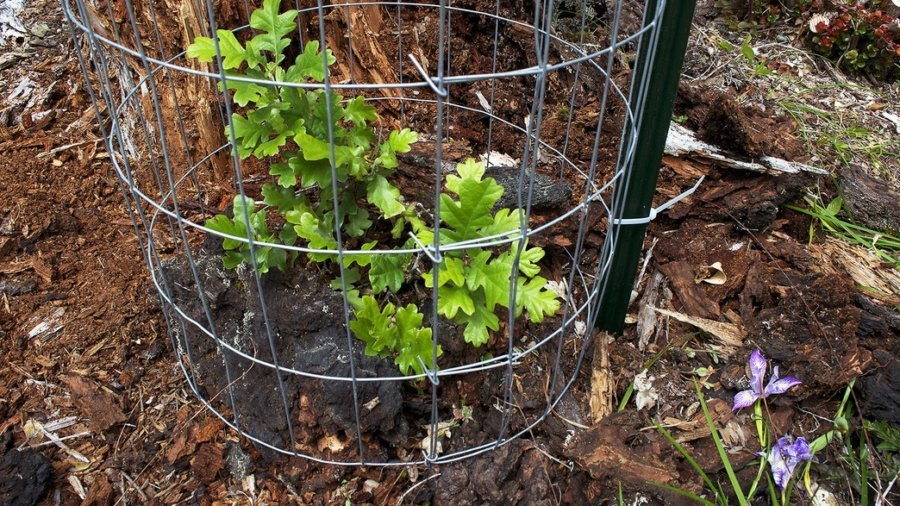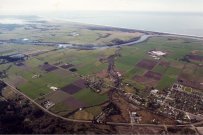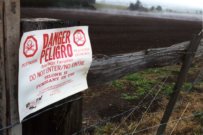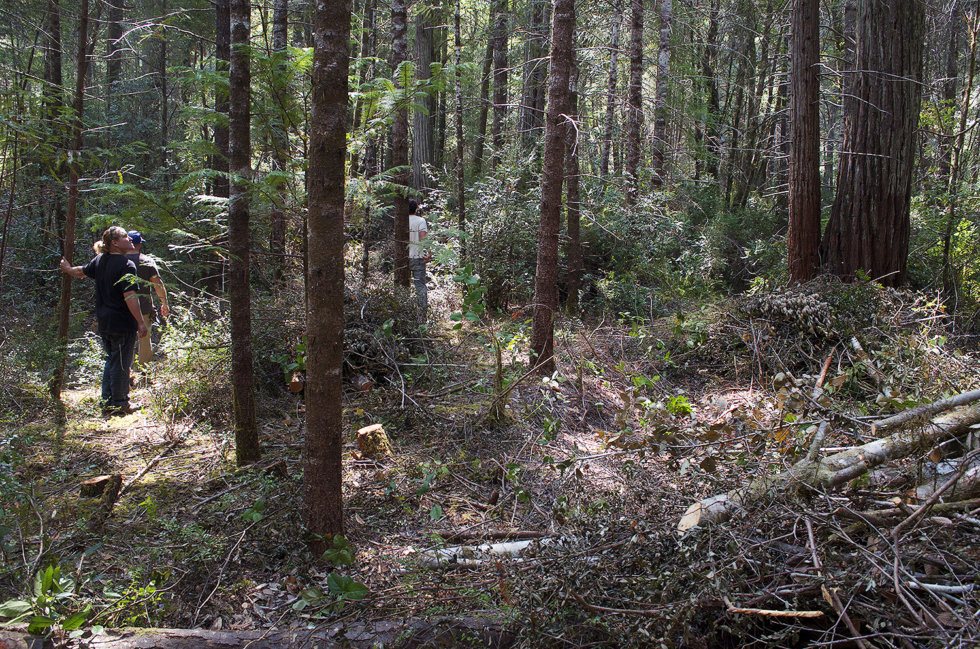
A ForestScapes sawyer examines the company’s work to thin overstocked conifers. Note the large redwood. The property contains the easternmost redwoods in the Smith River watershed.
Working alongside our landowner partners, from 2017-19 Siskiyou Land Conservancy will manage a three-year, $207,000 restoration grant from the U.S. Natural Resource Conservation Service to restore forest health, and replace failing culverts with a bridge, on the 148-acre South Fork Smith River Property that SLC protects with a conservation easement. Although SLC does not receive any income from this grant — all funds go to pay our contractors — it represents a significant advancement of what we consider a very important element of our programs.
We are very excited that the forest health work will be conducted by a new Humboldt County company, ForestScapes, whose employees live in Humboldt and Del Norte Counties. It has long been our desire to promote restoration on the North Coast not just to benefit the health of regional habitats, but to provide good paying forest jobs as well. We are now doing this on the Smith River.
NRCS-funded restoration also began this year on the 183-acre Mad River property that Siskiyou Land Conservancy protected last year with a conservation easement. ForestScapes is doing this work as well.
Because SLC sees no income from the federal government for this work, donations from the public are important. Learn how to contribute here.
The forest work consists of thinning from below in 70 acres of densely stocked, recovering stands of redwood, Douglas fir, and hardwoods. In addition, two large, failing culverts on a year-round stream will be replaced with a bridge. (Thanks to Pacific Watershed Associates for all their great work on this part of the project.)
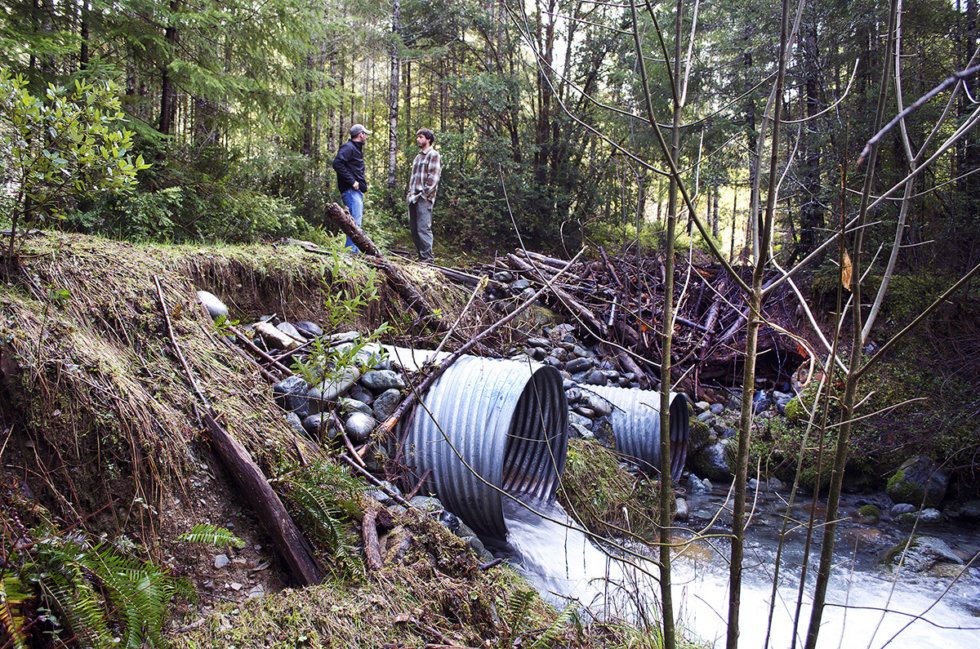
Failing culverts threaten aquatic habitat on a tributary to the South Fork Smith River. The culverts will be removed and replaced with a bridge.
We are also very excited that the project covers a rare two-acre habitat of meadows and Oregon white oak. The oaks are huge and probably close to 200 years old, but deer browse and competition from other tree species are having a devastating impact on young oak reproduction. So we are cutting back some of the competing trees — mostly young Douglas fir and canyon live oak — and caging oak seedlings before the deer can get to them.
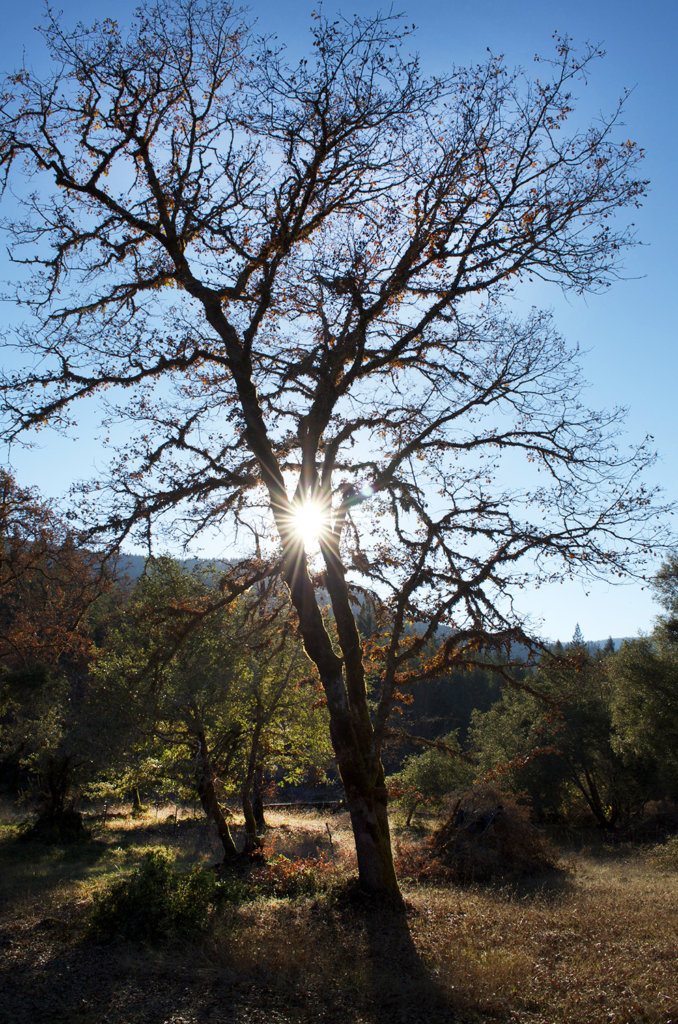
A rare, 200-year-old Oregon white oak in the meadow, 2017. Without SLC’s restoration efforts there would be no young trees to replace these as they fall.
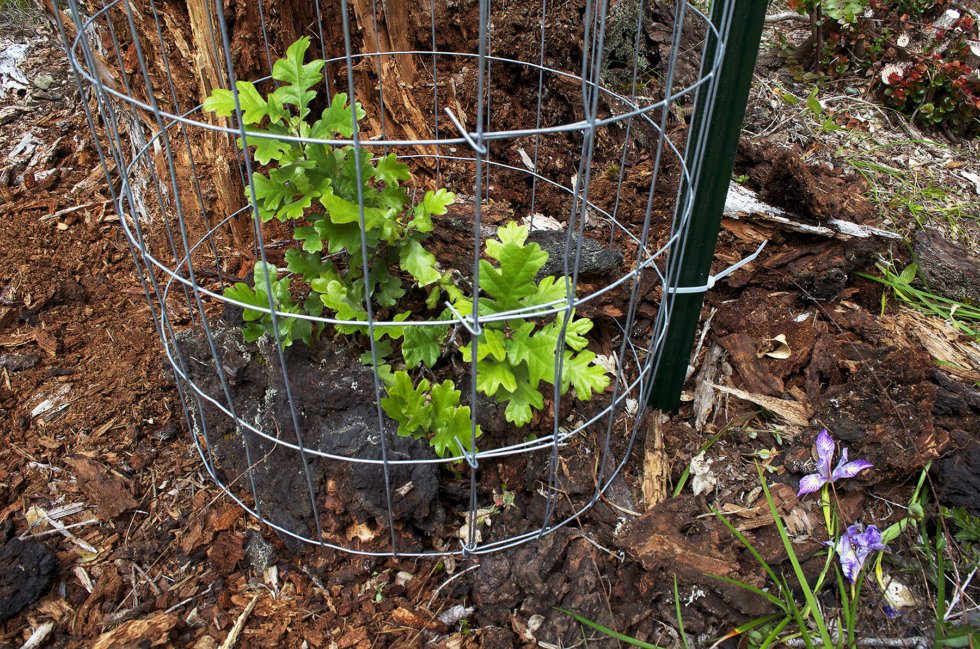
Caged to prevent deer browse, this young Oregon white oak will eventually replace the giant oaks whose acorns produce these seedlings.
